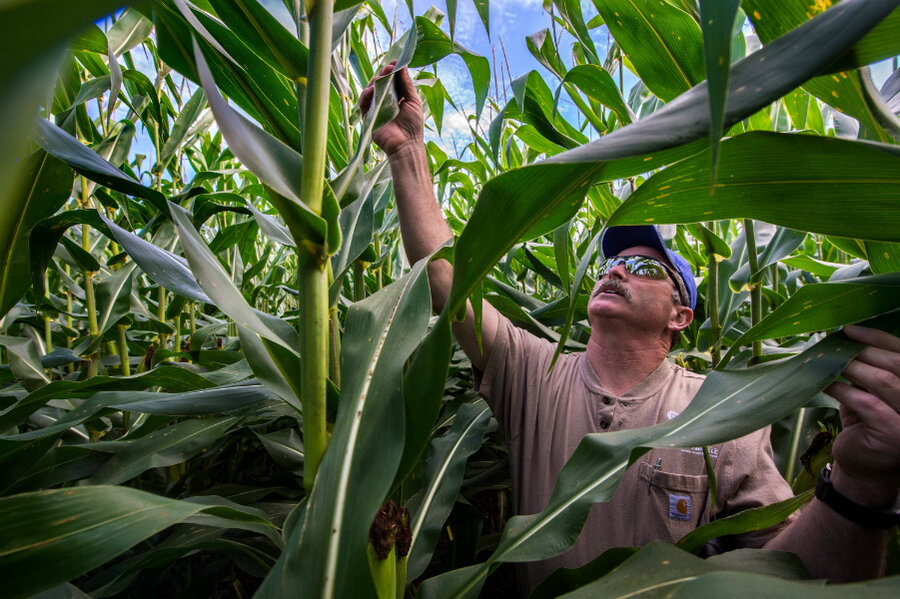Food prices are falling in the US. Is that a good thing?
Loading...
A trip to the grocery store costs Americans less these days as US food prices continue to fall. But not everyone is happy about that fact.
While the average consumer catches a budgetary break when the price of eggs, milk, and meat plummet, the same news spells declining revenue for those along the food supply chain. Such losses ripple their way through the economy from grocery stores to farmers and ranchers, the manufacturing sector and beyond with the potential of burdening taxpayers and prompting job loss.
Food prices aren't likely to stabilize any time soon. Economists expect the food-price trend, which began last year, to continue at least through December, thanks largely to excess supply and weak demand overseas because of a strong US dollar. In addition, American farmers are expected to harvest record-breaking amounts of corn and soybeans this fall, according to the US Department of Agriculture, pushing food prices down even further.
Stephanie Hegre, a mother of twin teenage daughters in Thousand Oaks, Calif., told The Wall Street Journal she's noticed her family's $200 weekly grocery bill decrease by about 10 percent.
"I feel it has dropped by $20 a week which, when you're on a budget, is noticeable," Ms. Hegre said, noting that she's been taking advantage of the low prices. "We freeze bread and buy two weeks' worth of bacon at a time."
In response to the steep decline in prices, the government expects to increase its payments to farmers this year by nearly 25 percent to $13.5 billion.
Ben Moore, a farmer with about 5,000 acres of corn and soybean fields in Indiana and Ohio, said he's expecting his bottom line this year to be the worst in two decades, reports The Wall Street Journal. He’s cutting costs by pushing for reduced prices on the supplies he buys and delaying equipment upgrades.
Since other farmers joined Mr. Moore in postponing their big-ticket purchases, it came as no surprise last month when Deere & Co., announced plans to curtail production of its iconic green tractors at plants in Illinois and Iowa in response to soft demand.
Next in the ripple effect are supermarkets. At least five grocery retailers warned their investors last month that deflation could pose a threat to company profits, with the nation’s largest supermarket chain, Kroger Co., expected to issue a similar warning this Friday, The Wall Street Journal reported.
"For investors with long-term horizons, this is transitory stuff," William Kirk, a food retail analyst at RBC Capital Markets, told The Wall Street Journal.
In the short-term, falling food prices mean groceries will be more affordable for consumers struggling to put food on the table. In 2014, the USDA published a report finding that higher food prices correlate with higher food insecurity, and Agriculture Secretary Tom Vilsack announced Wednesday that, compared to 2009, some 7.9 million fewer Americans are struggling to feed themselves.
Mr. Vilsack celebrated the announcement as a "significant benchmark" in the fight against hunger, while acknowledging that the battle is ongoing.
"The figures released today also remind us that our work to fight for access to healthy food for our nation's most vulnerable families and individuals is far from over," Vilsack added.







